Wheat flours are a big part of traditional baking, but don’t be confused by the different varieties. I’m here to help with this simple guide to wheat flours!
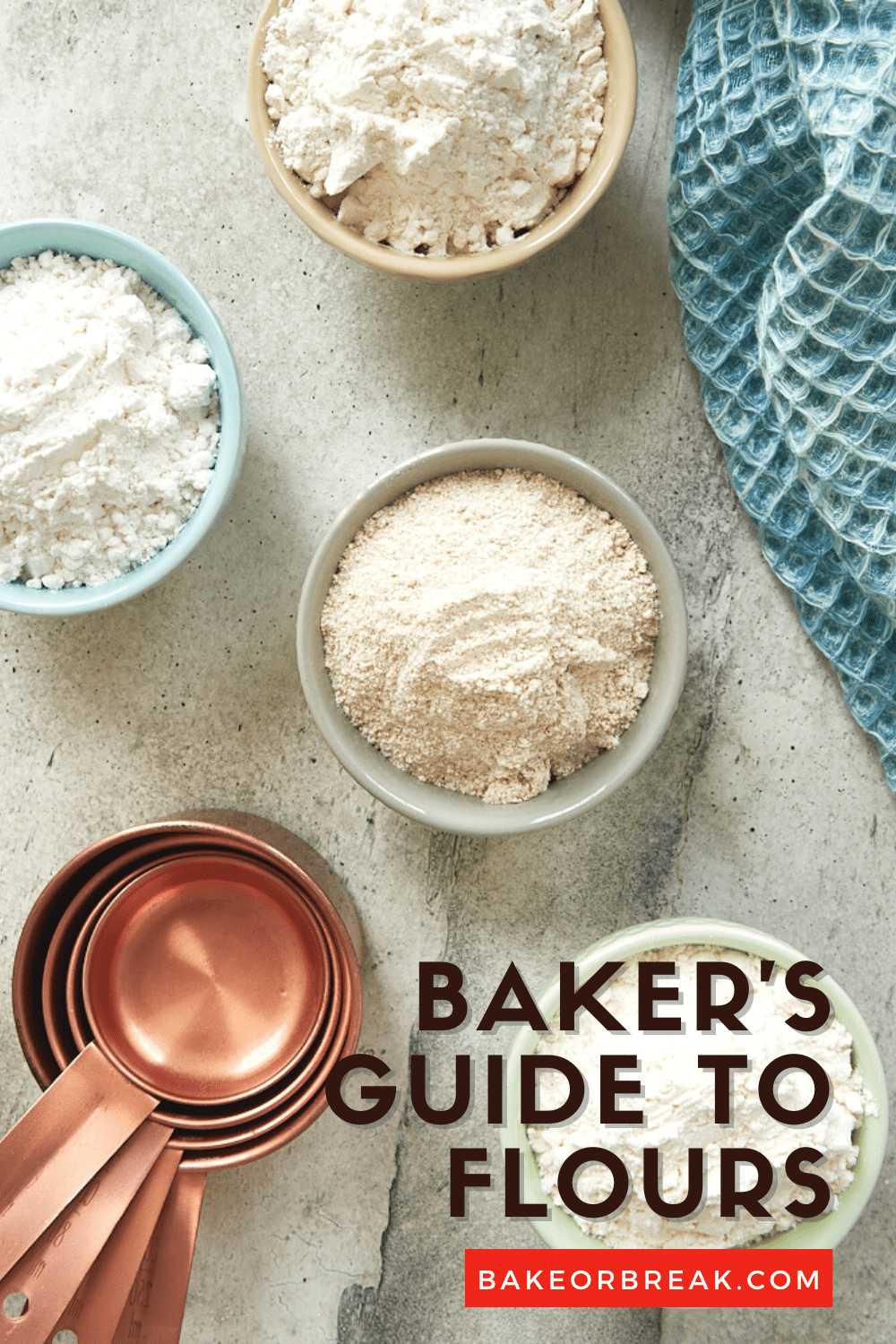
Wheat Flour Guide for Home Bakers
Flour is such an important part of traditional baking. I am very much a traditional baker, so I find that understanding the different types of wheat flours is a great baking tool. It’s just as important as your mixer, scale, pans, or any other tool you rely upon for baking. Luckily, it’s all fairly simple once you know a bit about what flour does in baking and what the differences are among the types of wheat flours.
The term “wheat flour” encompasses a lot of territory. Most flours used in baking are wheat-based. This encompasses all-purpose, cake, whole wheat, and more. We’ll get into the details of those in a bit, but let’s first talk about some wheat flour specifics.
What Does Flour Do in Baking?
Flour is important for structure in baking. When it is mixed with liquid, gluten is formed, giving baked goods structure and elasticity. The amount of gluten that it is formed will determine the texture of the final result.
For traditional baking, we’re focusing on wheat flour. Those wheats are classified based upon their color (red or white), their growing season (winter or spring), and their hardness (hard or soft).
The color mainly affects the flavor of the flour, with white wheat producing a milder flavor than red wheat.
The growing season often alters the protein content, with spring wheat usually containing more protein than the same variety of winter wheat.
The hardness of the wheat is an indicator of protein content. Harder wheats produce flours with higher protein content than flours that come from softer wheats. The amount of protein present reflects the amount of gluten the flour can form.
Do you really need to keep all of that straight in your brain? Not really. But if you’ve ever wondered, now you know.
What Does the Protein Content of Flour Mean for Your Baked Goods?
The amount of protein in flour determines how much gluten is formed. A higher percentage means more gluten will be formed. That’s a helpful thing in many recipes (like breads) where you want a strong structure. In contrast, a lower percentage means less gluten is formed, resulting in a softer texture, which is often desirable in more delicate baked goods like cakes.
Flours are classified in a few different ways, but the protein content is ultimately what I consider. There are, of course, differences in that content among types of flours. However, there are even differences among brands, just to make it even more interesting and potentially confusing. The troublesome part can be that there are sometimes differences within a brand’s specific type of flour, meaning that there’s a difference from one bag to the next.
Some brands keep tighter control over that protein content than others. Check the packaging for the protein percentage. If they give a wide range (2% or more) or don’t specify a protein percentage on their packaging, then be aware that you’re not likely to get consistent results with that brand.
What is the Difference Between Bleached and Unbleached Flour?
This is the eye-opening thing I discovered several years ago. Freshly milled flour needs to be aged before it can be used. That aging process causes the flour to become lighter in color.
Some manufacturers speed that process and alter the color by bleaching young flour with various chemicals. You may also see a flour labeled as bromated, which means that it was artificially aged with potassium bromate. My preferred flours are labeled unbleached and unbromated, as they’ve been allowed to age naturally.
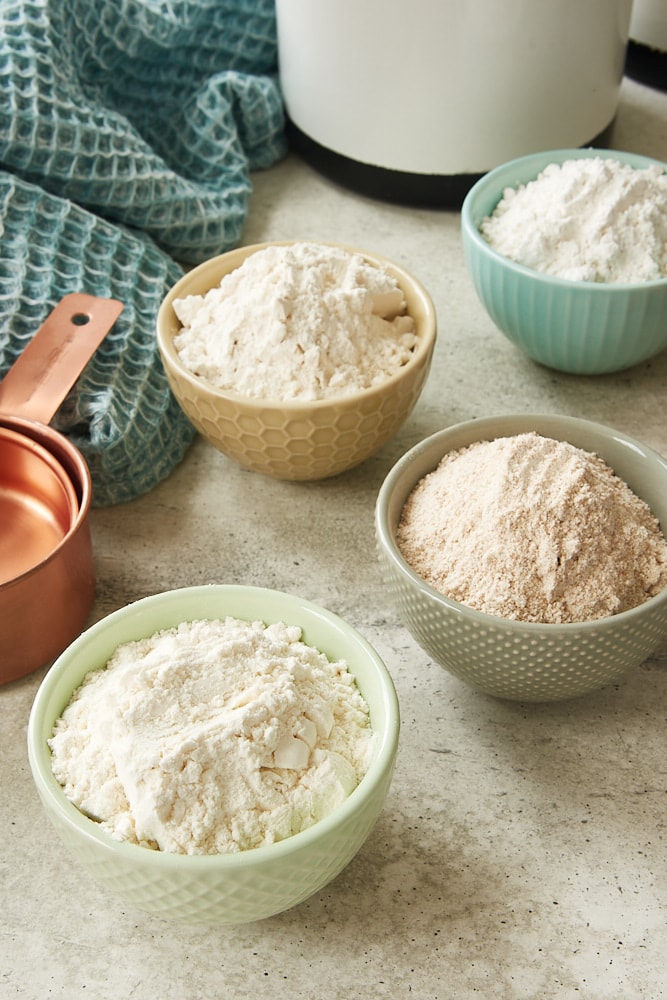
What Are the Differences Among Types of Wheat Flours?
This question comes up quite often. With so many different flours available, it can be overwhelming to feel comfortable choosing the right one or to know why your recipe uses one kind versus another. So, let’s talk about the differences in these flours.
All-Purpose Flour
All-Purpose Flour is the most common flour used by home bakers, and the most common flour in the recipes here at BoB. It is usually a combination of hard spring wheat and soft winter wheat flours that gives good results with most baking recipes. That’s why it’s called “all purpose.” The specific combination of flours used in all-purpose flour varies among brands, creating a range of protein content anywhere from 9 to 12 percent in most cases.
The tricky thing here is that not all brands of all-purpose flour have the same protein percentage. Even trickier, some brands vary their protein content by the region their products are sold. If you have a brand of all-purpose flour you prefer, then that’s great. If you’re looking for a good one, I highly recommend King Arthur Flour for many reasons, but its protein consistency is one of them.
Bread Flour
As the name implies, bread flour is often used for baking breads. It has a higher protein content, which leads to more gluten formation as the bread dough is kneaded. That increased gluten formation helps breads rise. Most bread flours contain 12 to 13 percent protein.
Cake Flour
Cake flour has a low protein content, which results in lighter baked goods with a tender crumb. That’s the kind of texture that you often want with cakes. The protein content will usually range from 6 to 9 percent.
This type of flour is also often bleached in a way that makes the flour slightly acidic. Interchanging cake flour and another flour generally does not work well because of that change in acidity.
That being said, if you find that you need to use all-purpose flour in place of cake flour, the usual substitution is to replace 2 tablespoons of every 1 cup of all-purpose flour with 2 tablespoons of cornstarch, and then whisk together or sift. The cornstarch will serve to help make a softer crumb.
If you want to use cake flour in place of all-purpose, a general rule is to use an extra 2 tablespoons of cake flour for every cup of all-purpose flour.
Pastry Flour
Pastry flour is a finely ground soft wheat flour with a mid-range protein content. It has less protein than all-purpose flour but more than cake flour. The protein content is most often about 8 to 10 percent. Some bakers prefer pastry flour for making pie crusts, biscuits, and other pastries.
If you’ve ever used White Lily all-purpose flour, then you may know that is essentially a pastry flour. Its protein content is usually around 9 percent, which has given it the deserved reputation for making great biscuits.
Self-Rising Flour
Self-rising flour is simply flour (usually all-purpose flour) that has had a leavening agent (usually baking powder) added to it. Salt is also frequently added. The ratio of those additions varies among brands.
If you find yourself needing self-rising flour for a recipe but don’t have any in your pantry, you can easily make your own self-rising flour.
Whole Wheat Flour
Whole wheat flour is not processed as the above white flours. While most flours are made from only part of the wheat berry, the entire wheat berry is used to make whole wheat flour. The inclusion of all of the parts of the berry gives whole wheat flour its speckled brown color. This type of flour usually has a protein content of 13 to 14 percent.
White Whole Wheat Flour
A variation of whole wheat flour is white whole wheat flour, which is milled from soft white winter wheat. The color and texture of this flour are lighter, and the flavor is milder. The protein content is normally slightly lower, as well, at around 11 to 13 percent.
Other Wheat Flours
There are some other less common wheat flours like Italian 00, graham, and semolina that each have their uses. For most traditional baking, the above flours we’ve discussed will be the most used in recipes.
How Do I Choose a Flour for a Recipe?
While I firmly believe that it’s important to know the differences among the different flours, keep in mind that the best flour for any given recipe is the flour listed in the ingredients. But understanding those differences will help in understanding why you might need different flours for different recipes and predicting how changing the type of flour in a recipe might affect the final result.
Don’t be overwhelmed by the variety of flours available at the local market. Hopefully, this quick guide to wheat-based flours offers a simple overview to help you understand which flour is right for any baking job.
Happy baking!
Now is a great time for a review of how to measure flour accurately!

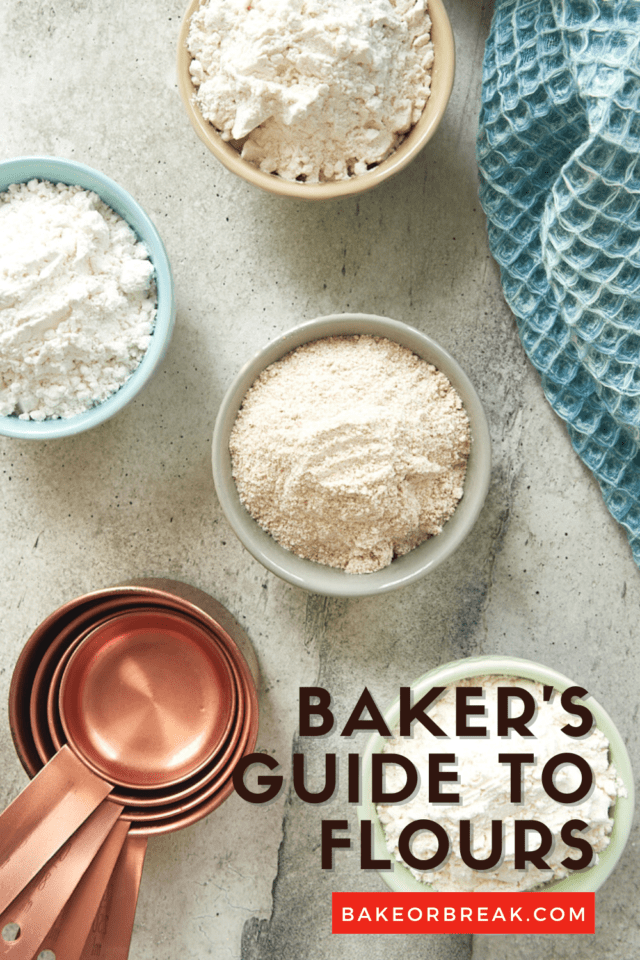
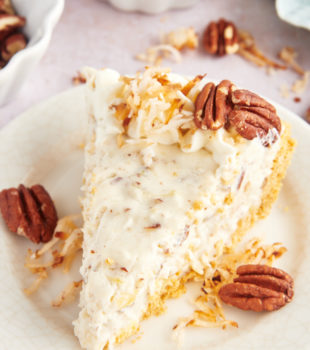
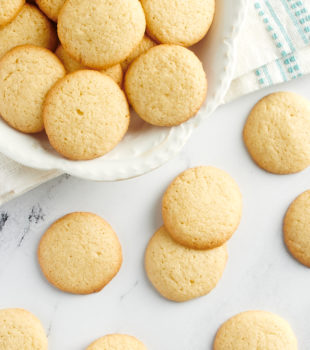
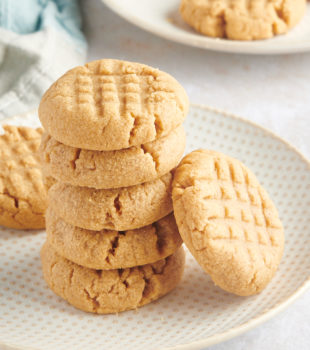


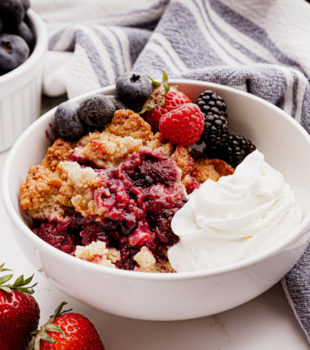
13 Comments on “A Baker’s Guide to Wheat Flours”
That was a great tutorial and although I am an experienced baker I found it edifying. But I have found all your columns to be just that, edifying and well written. Thank you.
Thank you so much, Lise! Your comment has made my day! 🙂
Great information!
If I have a recipe calling for Bread Flour and I don’t have this on hand, what can I add to all-purpose flour to make it “bread” flour?
Thanks, Carol
Hi, Carol! There’s not really anything you can add. However, you can make a 1:1 substitution in most recipes. The end result will be a bit different, but it will usually still be just fine.
Waoh, what a helpful information. Been terribbly disappointed with producing mini cakes and my assumption was right or not. I will be reading ingredients in a flour packet to understand it’s contents.
Thankyou! Jane Patrick
I’m glad you find it helpful, Jane!
That was great topic, When i want to know cake flour what the different others flour.
Thanks
Cake flour has less protein and usually a little acidity. There’s more information about that in the above description of cake flour.
And not all unbleached flours are the same. You mention bromate as a bleaching agent. Another is azodicarbonamide. 98% of the unbleached flours I find has that and the manufacturers claim it is a “leavening” agent and not a bleach. It IS a bleach. Just google the term. It’s been banned in almost the entire world (except the US, Canada and 3 other countries).
It is a chemical used in the making of rubber floor mats and shoe rubber. Sure don’t want that in my food.
Thanks for the above listing of flours.
Thanks for the additional info, Len!
I want to into baking of bread for commercial purpose, I want a recipe that is different from the common Ines here,I want something like a cake but its a bread.
What is Shorthill Wheat? I have a no. 10 can of “shorthill, and it appears to be the whole kernal. Is this different that any other wheat you would buy? Thanks. Jerry
Meier
Hi, Jerry! I’m not familiar with that and a quick internet search doesn’t really tell me anything, either. If there’s more info on the label, you might be able to use that to search a little deeper.